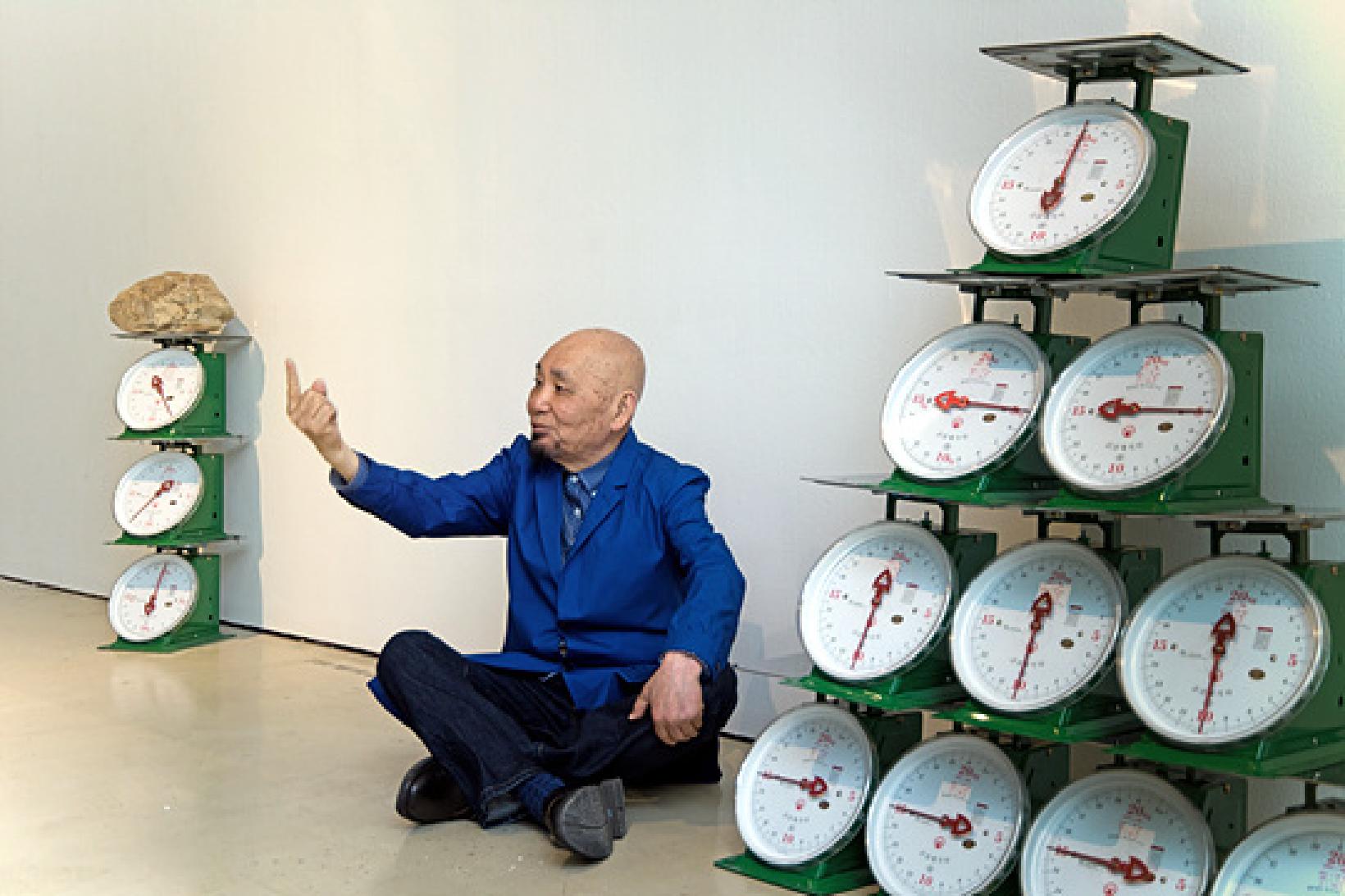Kwak Duck-Jun (1937-2025) was born in Kyoto—an ethnic Korean who has spent his entire life in Japan effectively as an immigrant. His notions of ‘identity’ and ‘origin’ have been nebulous and questionable, due particularly to the historical and social boundaries that existed around him.
Kwak’s paintings from the 1960s are composed of unrestricted curvilinear lines and shapes of undefined organic matter reminiscent of the human anatomy and expressions but products of the artist’s subconscious. As suggested through the titles of his paintings, Kwak’s body of work can be seen as embodying a darker side of society representing the personal anger, ridicule and despair stemming from his deeper recesses. The ingenious techniques manifesting his ideas tested the limits of the particular medium as if unable to contain his unbearable emotions toward the reality of the societal afflictions that buffeted the artist.
Kwak abruptly parted from his painting series during the 1970s as the interests of contemporary art moved towards the conceptual. During this time, Kwak’s practice focused on photography, collage, video and performance. The series President and Kwak earned him widespread recognition as a mixed media artist. Self-Portrait 78 is an example of a video work that relays his struggle to overcome his existential crisis and his deepest desire to discover his identity. In the 1980s Kwak created many artworks dealing with the relationship between the media image as seen in his Repetition series of silkscreen utilizing images from mass media to transform such information into art.
In 2003, he made his name in Korea through the exhibition “Artist of the Year,” organized by the National Museum of Modern and Contemporary Art, Gwacheon, Korea, and received wide acclaim in the art world with his large-scale exhibition, which opened at the National Museum of Art, Osaka in 2014.
Kwak’s works are in numerous collections including, among others, the National Museum of Modern and Contemporary Art, Korea, Seoul Museum of Art, Taipei Fine Arts Museum, National Museum of Modern Art Kyoto, Museum of Contemporary Art Tokyo, Fukuoka Prefectural Museum of Art and the Rachofsky Collection.
곽덕준은 1960년대말, 석고, 호분, 수지 등이 들어간 독특한 회화로 미술계에 등장했지만, 1970년대부터는 사진, 이벤트, 영상, 퍼포먼스, 판화 등 다양한 매체의 작업을 발표하며 활동의 폭을 넓혀갔다. 그러던 중, 1974년 ‘포드와 곽’이라는 ‘대통령’시리즈를 발표하면서부터 그는 일본미술계의 주목을 받게 되었다. 그는 시사주간지 ‘타임 Time’표지에 실린 미국 대통령 제럴드 포드(Gerald Ford)의 얼굴과 자신의 얼굴을 합성했고, 이후에도 미국의 대통령 선거가 있을 때마다 같은 방식으로 자신의 신체를 활용한 작업을 만들었다. 1978년 비디오 작품 〈자화상 78〉도 역시 작가의 얼굴이 소재가 된 작업이다. 곽덕준은 금이 간 유리판을 양손으로 잡고, 자신의 얼굴을 유리판에 대고 이리저리 문지른다. 유리에 얼굴을 완전히 밀착시켜 움직이기 때문에 유리면에 접촉된 얼굴 부위는 무참하게 일그러진다. 유리에 눌린 그의 얼굴은 타자로 살아가는 한 사람의 고뇌와 숙명을 떠올리게 만든다.
곽덕준은 1937년 일본 교토에서 출생했다. 그의 부모는 그가 태어나기 10여년 전 한국에서 일본으로 이주하였다. 일본 국적으로 일본에서 거주하던 곽덕준은 샌프란시스코 강화조약(1951년)으로 인해 일본 국적을 박탈당한다. 의도치 않게 ‘재일한국인’이 되었지만 그렇다고 해서 그가 온전하게 한국인이 된 것은 아니었다. 한국인이라고도 일본인이라고도 말하기 어려웠던 곽덕준은 일본 사회에서 ‘근원적인 타자’가 될 수 밖에 없었다. 2003년 국립현대미술관 올해의 작가전을 기점으로 국내에서 널리 이름을 알렸으며, 2014년에는 오사카 국립국제미술관에서 대규모 전시를 가지며 미술계로부터 많은 찬사를 받았다. 국립현대미술관, 서울시립미술관, 대만시립미술관, 후쿠오카현립미술관 등 유수의 미술관에서 작품을 소장하고 있다.
